“What we see in Ukraine is an attempt to erase history, culture and heritage. Ukraine is in a war for culture.”
The morning of October 18 started with a lecture by Professor Ian Kuijt in the walls of the Red University Building, where the whole hall was filled with people interested in the topic of preservation and work with heritage. You can read more about the lecture in the report of the University Communications Center – https://knu.ua/news/12952 .
After the presentation and discussion of issues related to cultural heritage during the war, we started a trip to the northern part of the suburbs of Kyiv region, in order to film and record the damage caused to archaeological and architectural monuments by the russian invasion. The team was formed by participants of the center, research employees of the Institute of Archeology of the National Academy of Sciences of Ukraine, students and teachers of Taras Shevchenko National University of Ukraine and postgraduate students of Kyiv-Mohyla Academy: Pavlo Shidlovskyi, Ivan Zotsenko, Vitaly Lavrov and Oleksandra Ivanova. The team visited various locations of the historic city of Vyshhorod, Demydiv Hillfort, and the destroyed dam that prevented the Russians from advancing to the capital in March 2022. However, at the same time, flooding caused by the destruction of the dam ruined the Early Iron Age site.
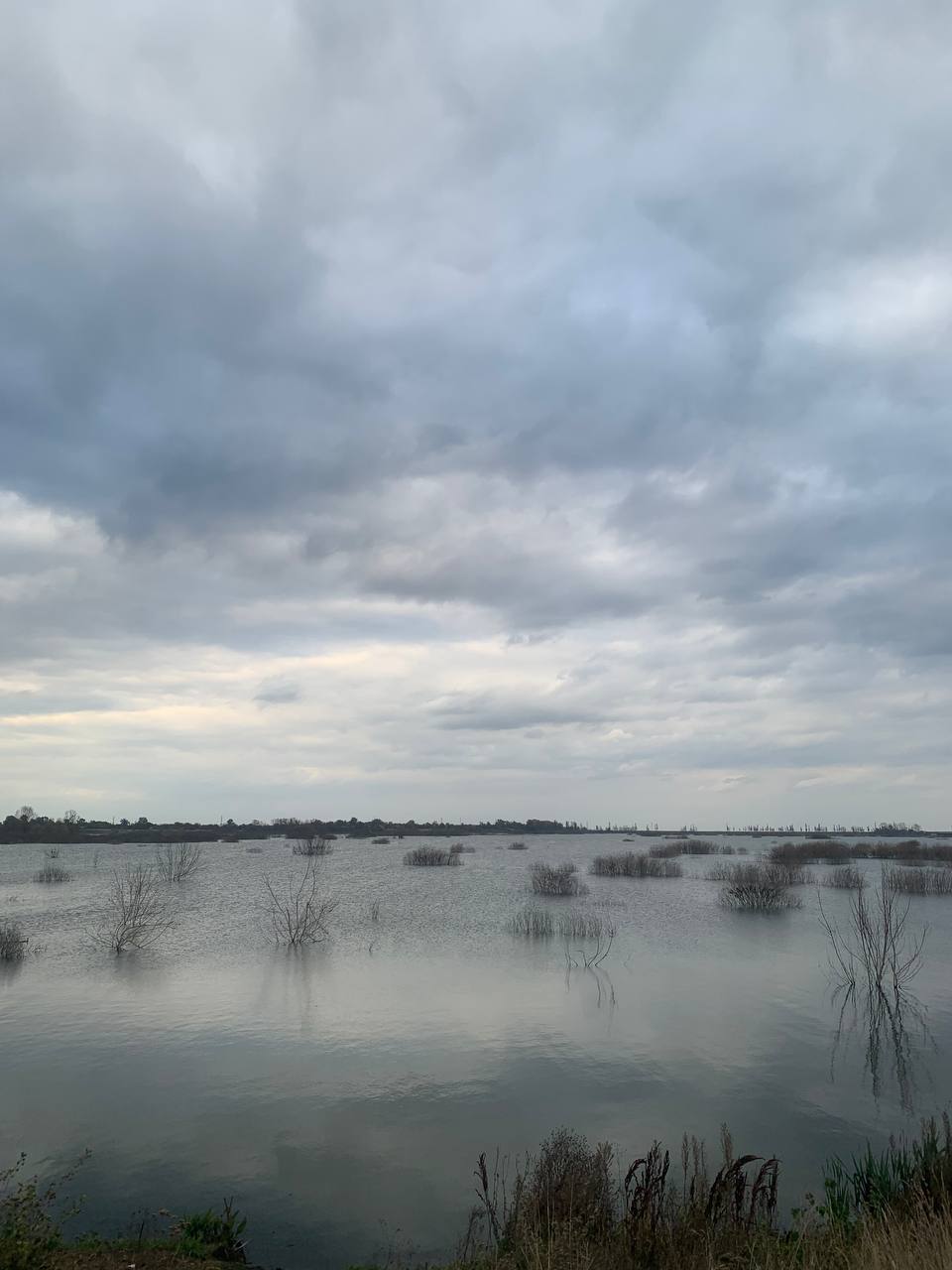
Photo: A view of the flooded monument of the early Iron Age, as a result of the destruction of the dam in Demydiv, Kyiv region.
The next day, our team was joined by a student of the Department of Archeology, Lyubov Eredenko, and we went to survey the southern suburbs of Kyiv. We visited the line of fortifications, which ran in approximately the same places during the times of the Scythians, Kyivan Rus`, World War II, and the modern war with russia. This is caused by the peculiarities of the landscape (two rivers – Irpin and Vita, which surround Kyiv, forming a triangle and are an excellent place for building fortifications and defense of the capital).
First, we visited the Kyivan Rus` hillfort in Vyta-Poshtova where battle positions were set up in 2022, accompanied by the Archaeological Landscape Monitoring Group. Fragments of pottery, bones, and other archaeological material were clearly visible in the walls of the defensive structures. Next to the hillfort, there is a military pillbox from the time of World War II, which confirms the importance of the location of this point for the strategic defense of the capital. Later, our team went to the settlement “Kruglyk”, which interestingly combines a Scythian settlement with fortifications dating back to World War II. After all, the landscape has not changed much over the past millennia, so locations that were convenient for observing and repelling enemy attacks a thousand years ago remain so to this day.
A particularly interesting location of the day was a visit to the Scythian ramparts in the area of the Hodosivka archaeological complex, where the Ukrainian military constructed fortifications to defend from Russia. This summer, the monitoring expedition of the Institute of Archeology and the Northern Permanent expedition discovered Rus` period burials in modern observation points.
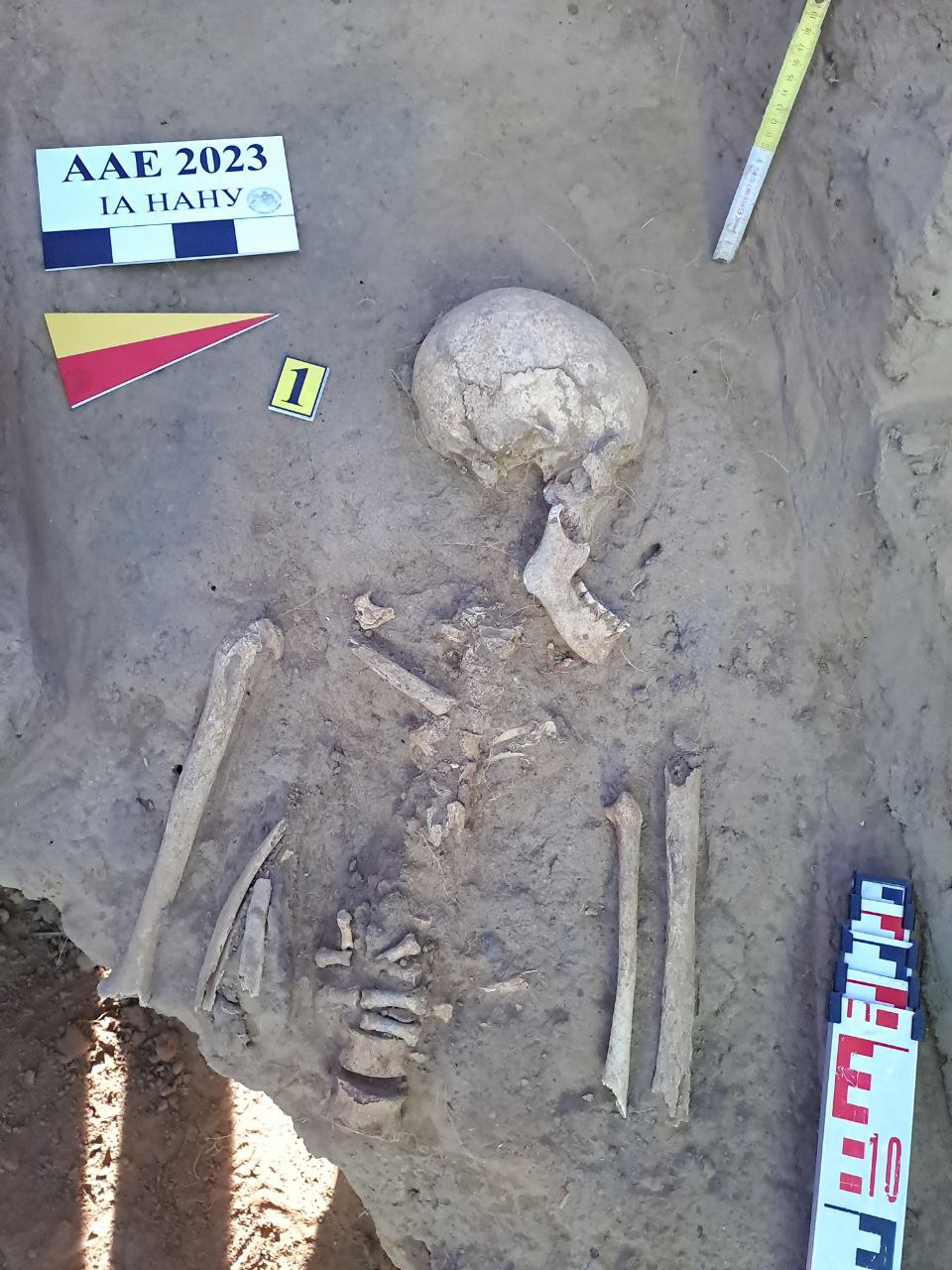
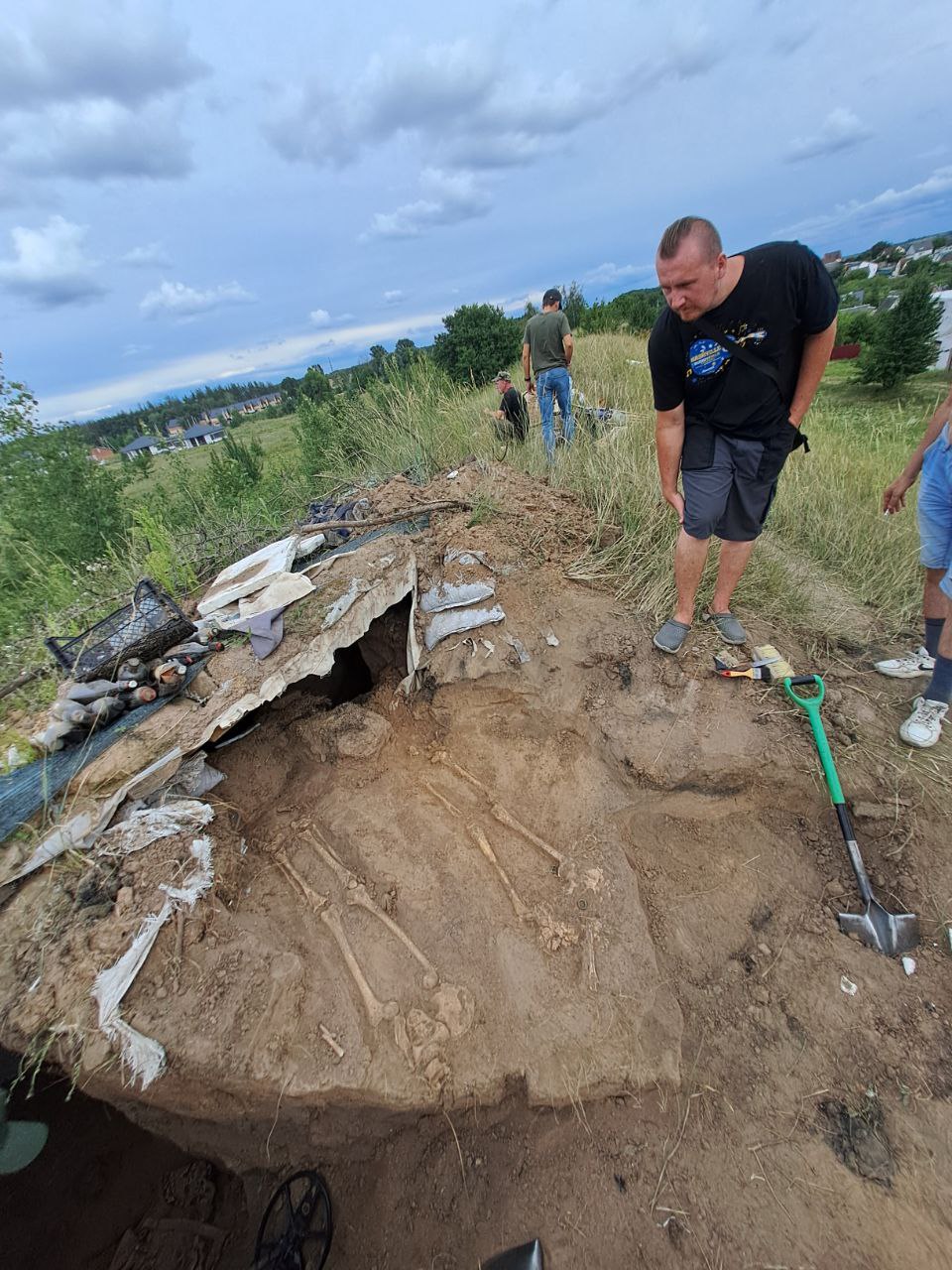
Photo: Clearing of burials of the Rus` period into the rampart of the Scythian hillfort in the summer of 2023.
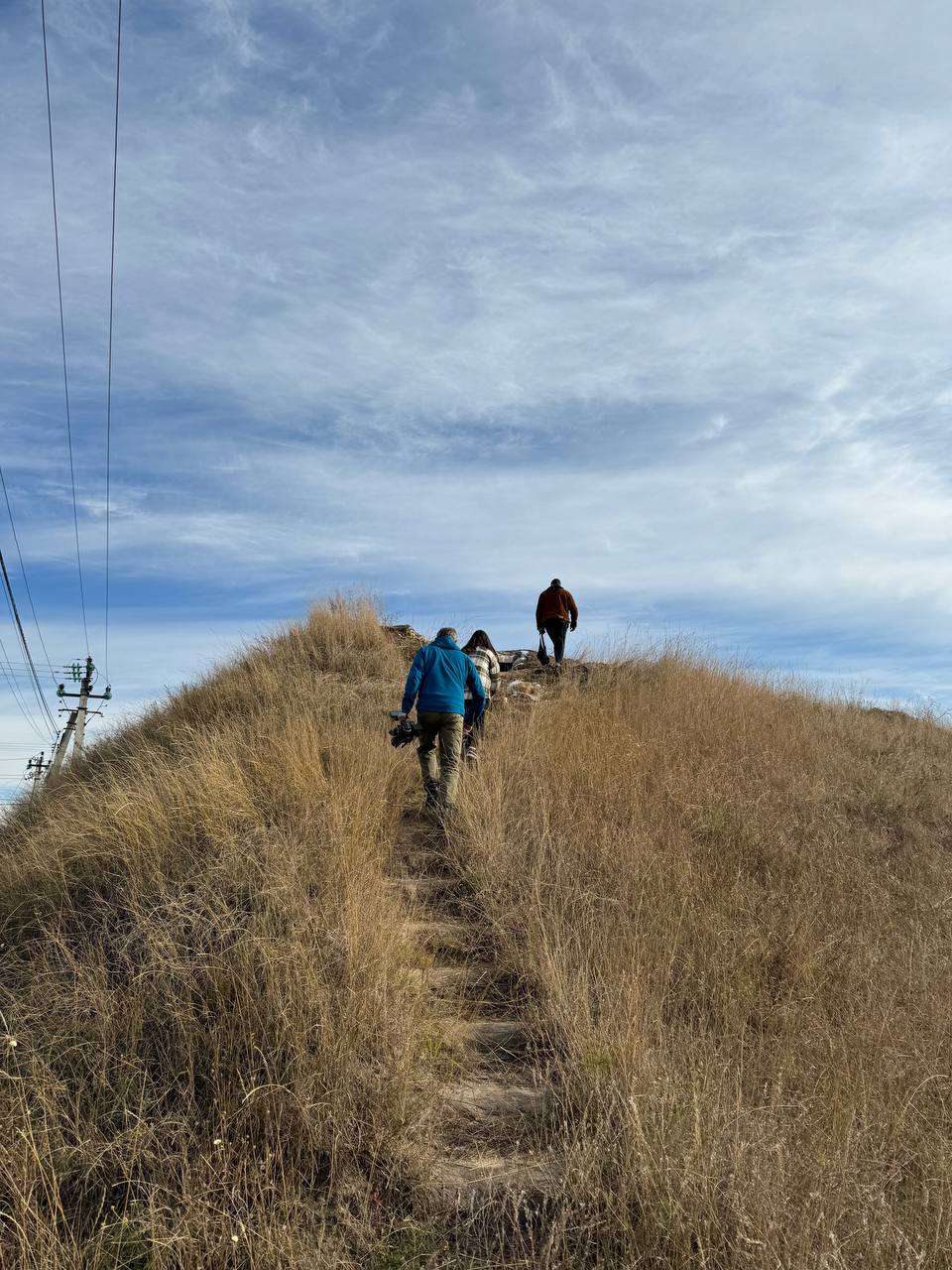
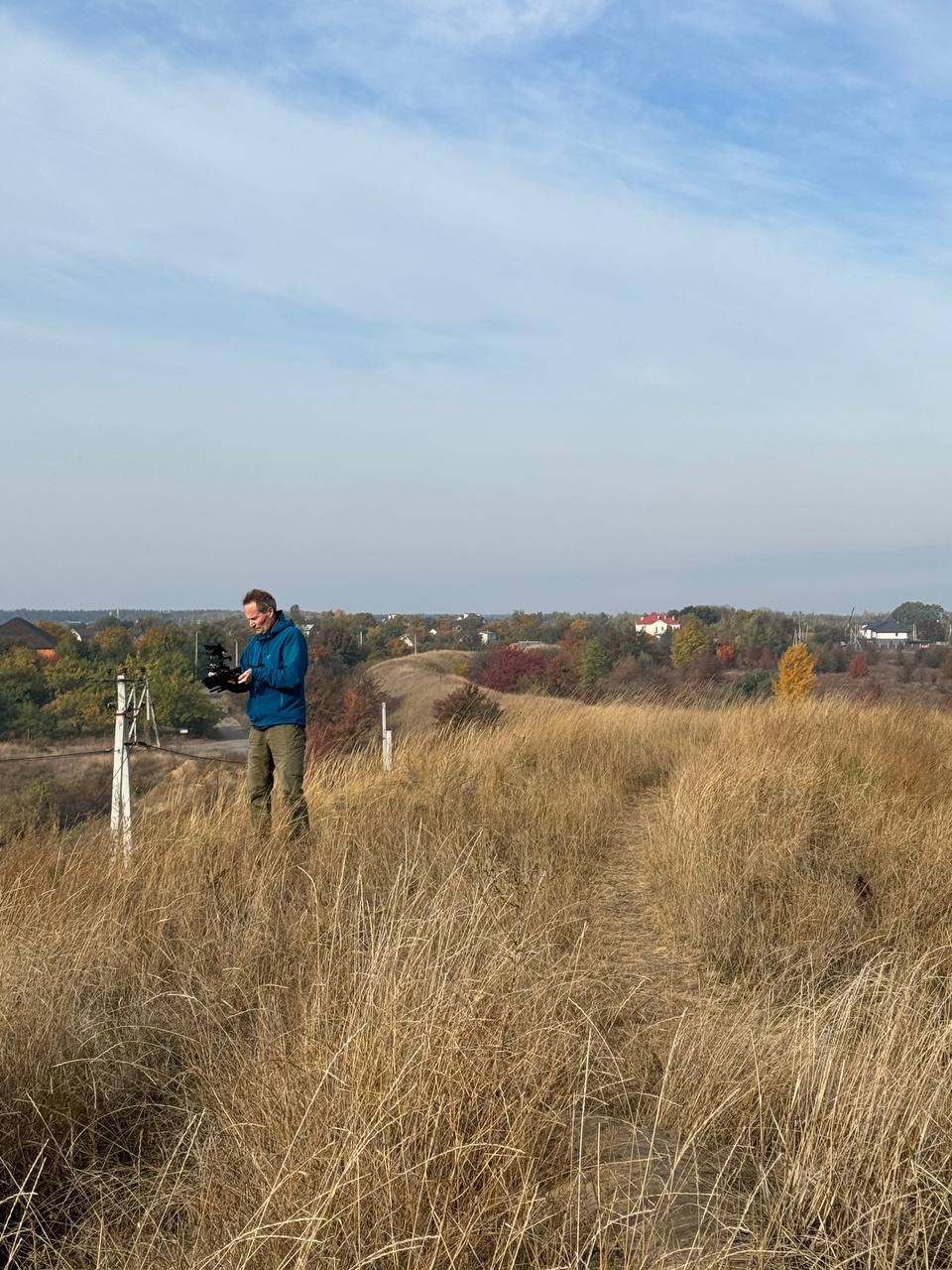
Photo: The current state of the Scythian ramparts in the area of the Hodosivka archaeological complex, October 2023.
The next and largest location was the Tumasch hillfort. The entire territory of the settlement is intersected by numerous fortifications, trenches, and dugouts reaching a depth of more than 2.5 meters. The cultural layer traced in the walls of the fortifications is clearly represented by ceramics of the 11th-12th centuries, bones, and pottery. This monument became an extremely interesting point of our trip because it allowed us to fully imagine the scale of destruction caused by hostilities throughout the territory of Ukraine.
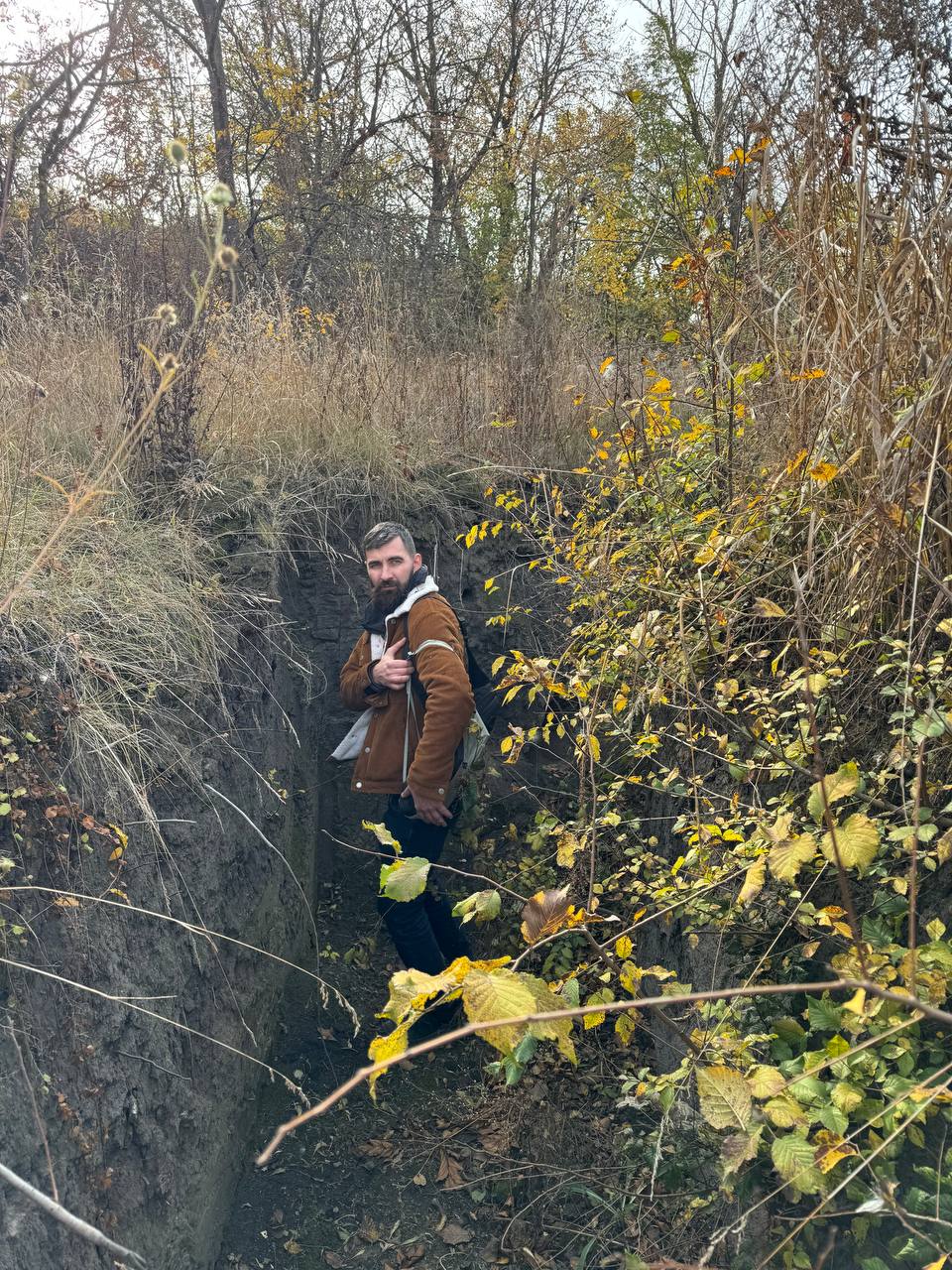
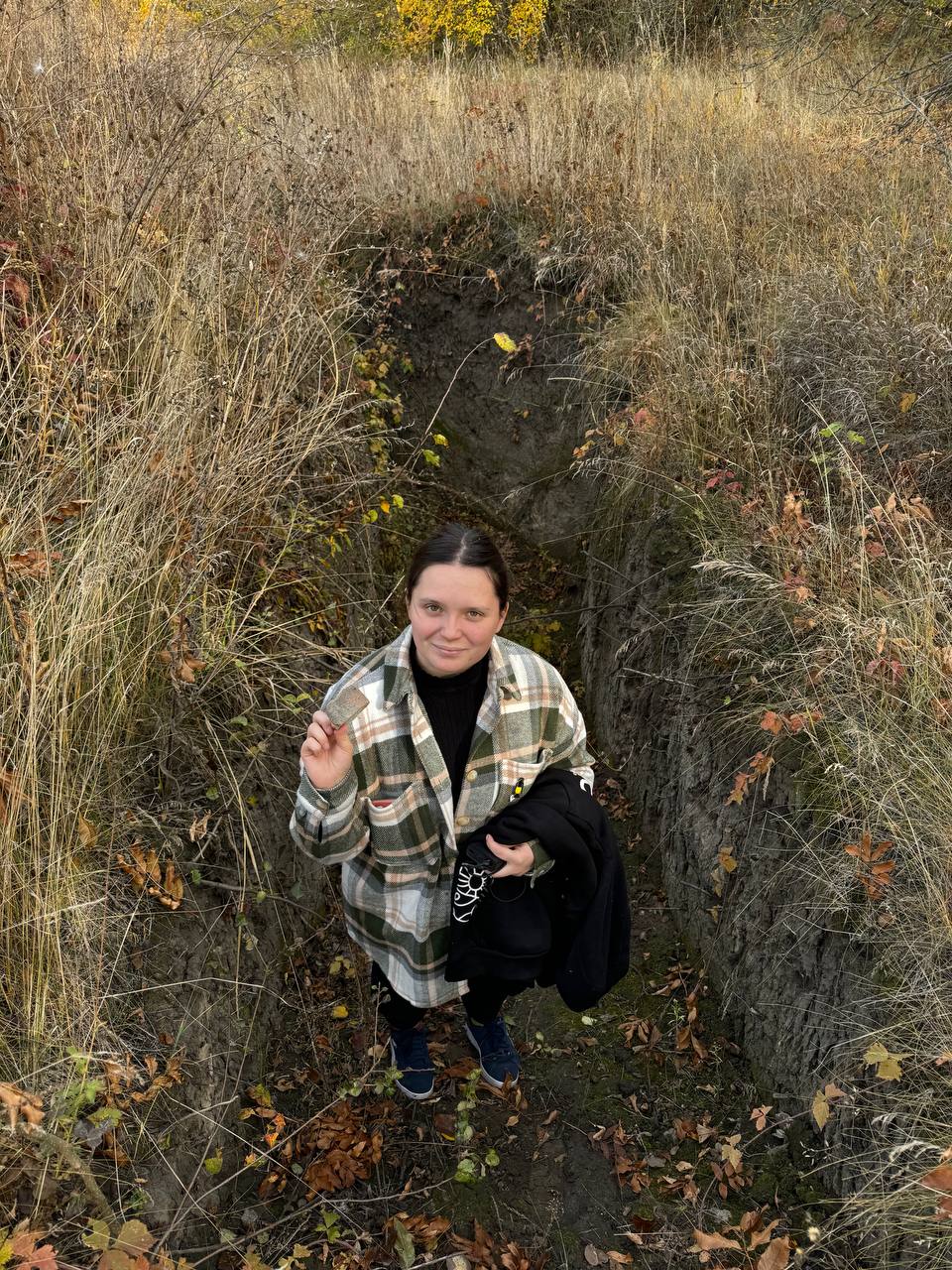
Photo: Tumash settlement of the 11th-12th centuries.

Photo: Map of a trip to the south of Kyiv region (by Lyubov Eredenko).
The next day was devoted to the sights of the Chernihiv region and began with the city of Chernihiv itself. The first half of the day was dedicated to the architectural monuments of the 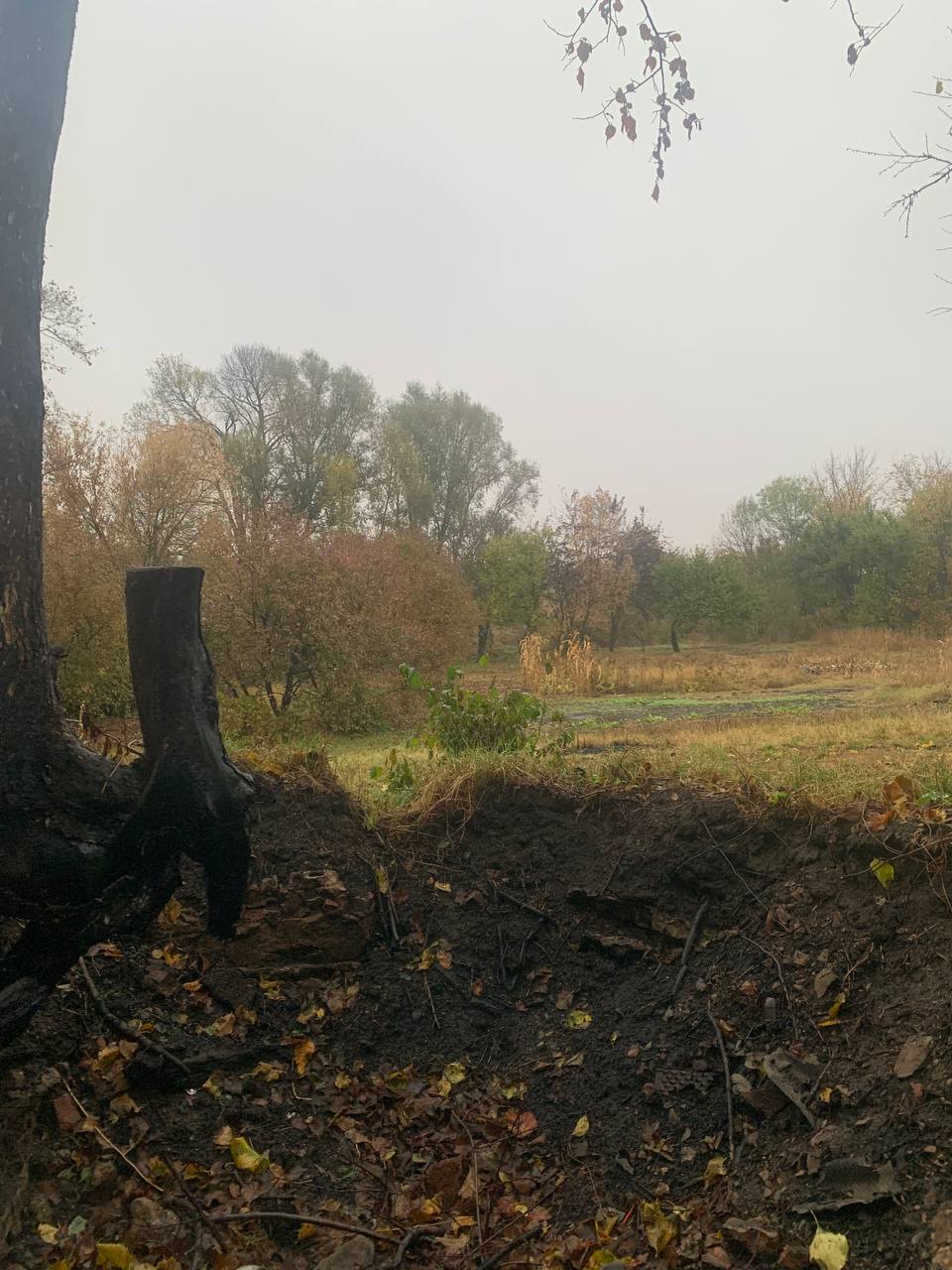 Chernihiv region, which were destroyed during the full-scale invasion of Russia, namely the Chernihiv Drama Theater and the Church of the Intercession in Lukashivka. The end of the day was getting acquainted with the positive experience of the protection of archaeological monuments in the city of Nizhyn, Chernihiv region. Thanks to the concerted work of local archaeologists, namely Ivan Kedun, the construction of fortifications in the first months of the invasion was planned in such a way as to bypass known archaeological sites and not destroy them with trenches and dugouts. We inspected the fortifications that protected the approaches to the city, as well as the historic settlement of Unenizh, which was damaged by artillery shelling.
Chernihiv region, which were destroyed during the full-scale invasion of Russia, namely the Chernihiv Drama Theater and the Church of the Intercession in Lukashivka. The end of the day was getting acquainted with the positive experience of the protection of archaeological monuments in the city of Nizhyn, Chernihiv region. Thanks to the concerted work of local archaeologists, namely Ivan Kedun, the construction of fortifications in the first months of the invasion was planned in such a way as to bypass known archaeological sites and not destroy them with trenches and dugouts. We inspected the fortifications that protected the approaches to the city, as well as the historic settlement of Unenizh, which was damaged by artillery shelling.
As a result of this series of trips, a video by Professor Ian Kuijt dedicated to informing American society about the consequences of the russian war on Ukraine should appear in free access. And we should remember the importance of protecting our own cultural heritage because if we lose our cultural, we will lose our identity.
Photo: Part of the settlement in the city of Nizhyn was damaged as a result of artillery shelling.
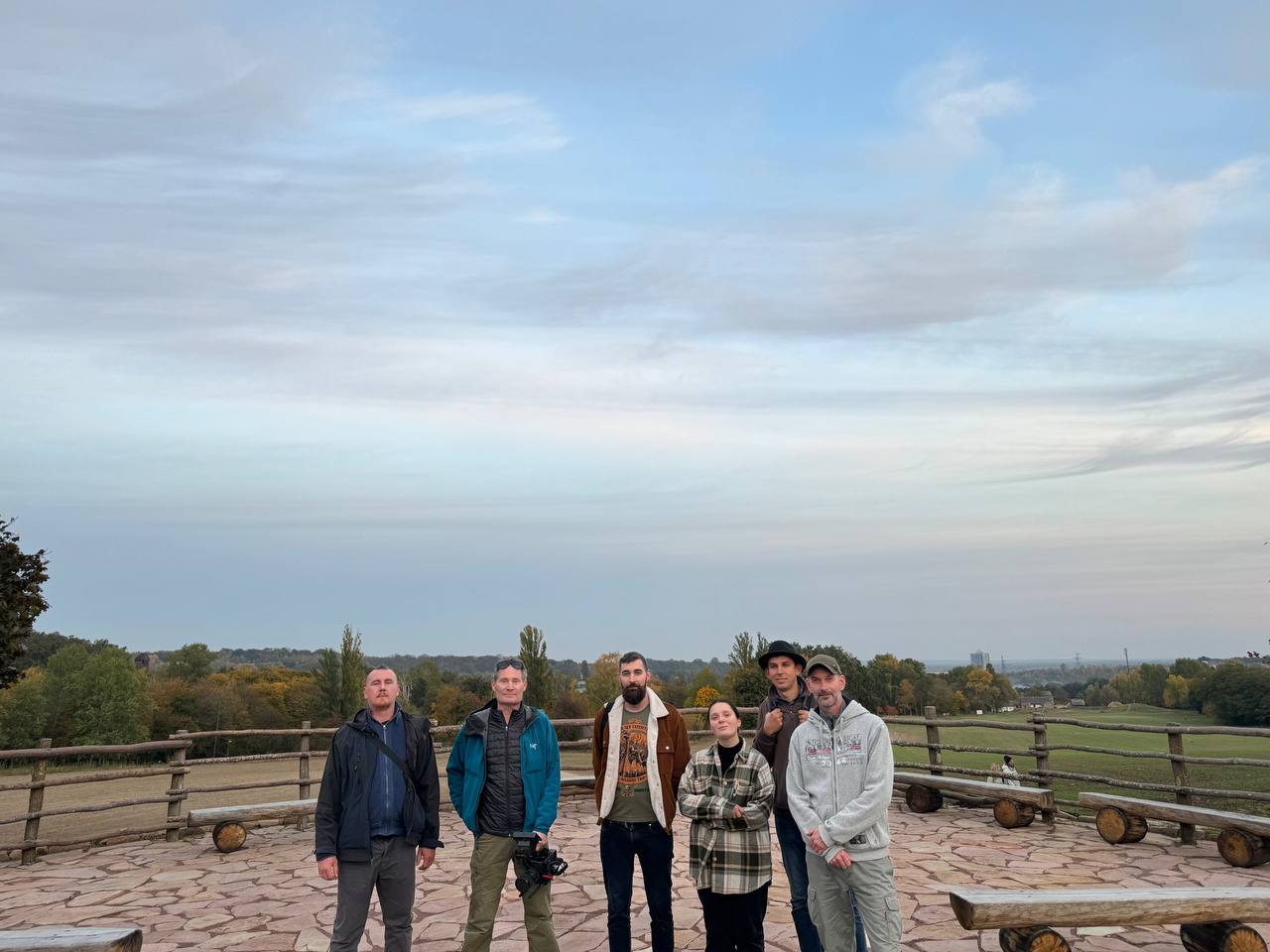
Photo: The team of the trip to the National Museum of Folk Architecture and Life of Ukraine.
